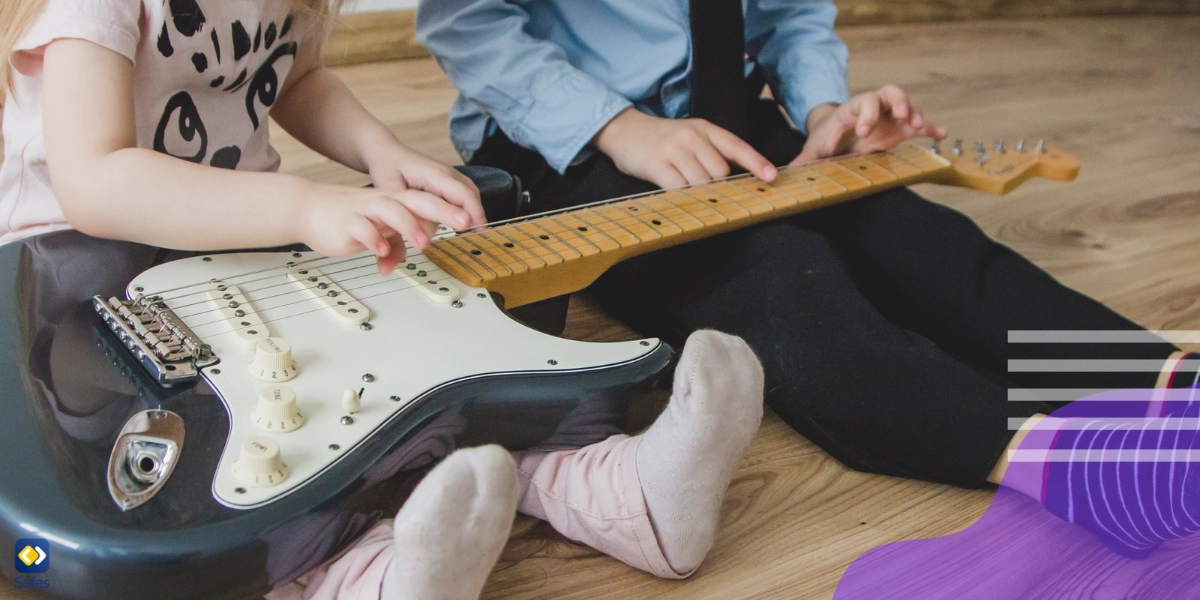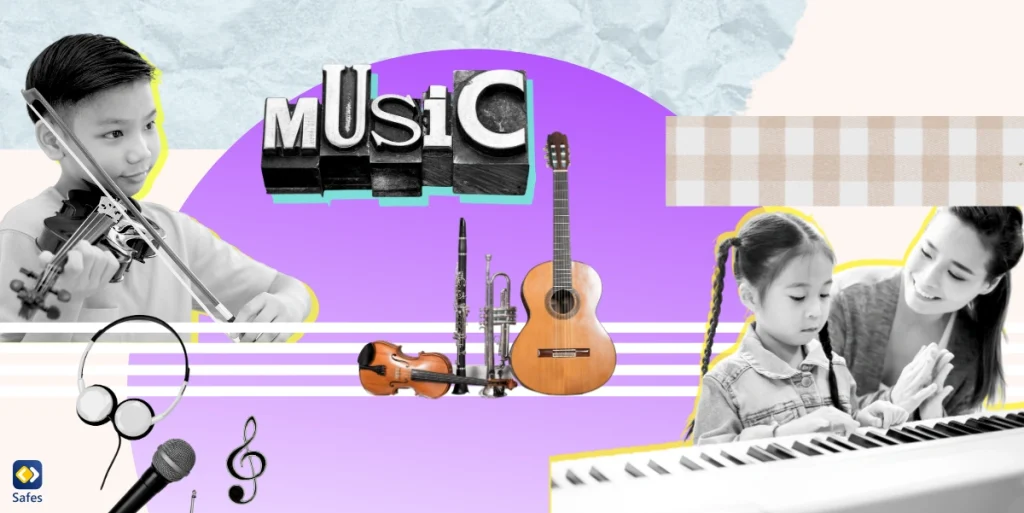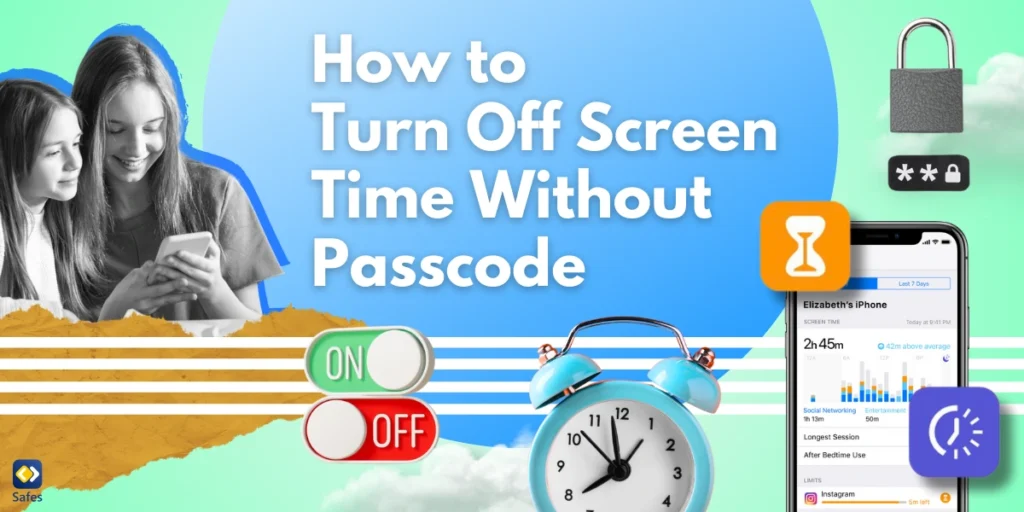Deciding on the right musical instrument for your child is a significant step in fostering their cognitive and emotional development. In this guide, we’ll explore practical considerations for parents as they navigate the world of musical instruments for kids. From string and wind instruments to percussion and keyboards, each category comes with its own set of benefits and factors to weigh. Let’s dive into the specifics to help you make an informed decision that aligns with your child’s interests and abilities.
Download and Start Your Free Trial of the Safes Parental Control App
Why Should Children Learn a Musical Instrument?
Learning a musical instrument offers numerous benefits for children, both cognitively and emotionally. Here are some general advantages:
- Cognitive Development: Learning an instrument enhances various cognitive functions such as memory, attention, and problem-solving skills. Studies show that it also improves mathematical abilities and spatial-temporal skills.
- Emotional Expression: Playing an instrument provides a creative outlet for emotional expression. It helps children develop a sense of accomplishment and boosts self-esteem.
- Discipline and Patience: Musical training instills discipline and patience, as mastering an instrument requires regular practice and perseverance.
- Social Skills: Playing in a group or ensemble encourages teamwork and collaboration, fostering social skills and communication.
- Stress Relief: Music has therapeutic qualities and can serve as a stress-reliever, promoting emotional well-being.

Factors to Consider When Choosing a Musical Instrument
Choosing a musical instrument for a child involves considering several factors to ensure a positive and enjoyable learning experience. Here are key factors parents should take into account:
- Child’s Interests: Consider your child’s interests and preferences. If they are drawn to a particular instrument or type of music, it can make the learning process more enjoyable and motivating.
- Age and Size of the Child: Younger children may find certain instruments more suitable due to their size and physical demands. Instruments like the violin, recorder, or smaller keyboards are often recommended for beginners. The best starting musical instrument for 5-year-olds may be different from the best starting musical instruments for 7-year-olds, 10-year-olds, and so on. Also, your child’s musical intelligence may differ with age.
- Physical Abilities: Assess your child’s physical abilities. Some instruments, like the piano or guitar, require finger dexterity, while wind instruments like the flute or trumpet involve breath control. Choose an instrument that aligns with your child’s physical capabilities. For example, preschool musical instruments can be things such as xylophones which don’t need much physical ability to start off.
- Budget: Consider your budget for both the instrument and any necessary accessories (e.g., cases, maintenance). Some instruments, like keyboards or recorders, may be more budget-friendly for beginners. You should also consider whether you want to rent an instrument or have it at home. Home musical instrument lessons for kids can be more expensive but usually yield better results.
- Noise Level: Be mindful of the noise level associated with certain instruments. If you live in a shared or noise-sensitive environment, instruments like the violin, flute, or electronic keyboards may be more suitable.
Overview of Musical Instruments for Kids
Here’s an overview of the different musical instruments for kids from which you can choose from. Generally, the musical instruments we’ve chosen to introduce here can be categorized into string instruments, wind instruments, percussion instruments, and keyboard instruments. We should mention that there are many interesting musical instruments out there for kids to choose from and the instruments mentioned here are only chosen because they are more accessible and easier to find. But if you know of any instruments that you think are great for kids, especially if they are more popular in your culture, feel free to mention them in the comments.
String Instruments
String instruments produce sound through the vibration of strings stretched across a resonating body. Players manipulate the strings by plucking, bowing, or striking to create different pitches and tones.
Violin
The violin is a versatile and expressive string instrument. It’s suitable for children due to its smaller sizes designed for younger players. Learning the violin fosters fine motor skills, hand-eye coordination, and a deep appreciation for melody.
Guitar
The guitar is a popular choice for its versatility across various musical genres. It’s available in various sizes, making it adaptable for different age groups. Learning the guitar enhances finger strength, dexterity, and introduces children to chord progressions and strumming patterns.
Ukulele
The ukulele is a small, four-stringed instrument known for its cheerful sound. Its compact size and simplicity make it ideal for young children. Learning the ukulele introduces basic chord structures and rhythm, providing a delightful entry point into the world of string instruments.
Wind Instruments
Wind instruments produce sound by vibrating air within the instrument. Players create sound by blowing air through a mouthpiece or across an edge, creating vibrations that resonate within the instrument.
Recorder
The recorder is a common choice for beginners due to its simplicity and affordability. It helps children learn breath control, basic music notation, and lays the groundwork for more advanced wind instruments.
Flute
The flute is a graceful wind instrument with a bright tone. It’s suitable for children with its varying sizes. Learning the flute enhances breath control, finger coordination, and introduces children to the world of melody and pitch.
Clarinet
The clarinet is a versatile woodwind instrument with a unique timbre. While slightly more advanced, it’s suitable for older children. Learning the clarinet refines breath control, finger agility, and introduces children to a rich range of musical styles.

Percussion Instruments
Percussion instruments produce sound by being struck, shaken, or scraped. They include a wide range of instruments that contribute rhythm and texture to music.
Drums
Drums provide a rhythmic and dynamic introduction to percussion instruments. Ideal for energetic children, playing drums enhances coordination, timing, and introduces them to the fundamental elements of rhythm.
Xylophone
The xylophone is a melodic percussion instrument that’s visually appealing and easy for children to grasp. It helps develop hand-eye coordination, a sense of pitch, and an understanding of basic musical scales.
Tambourine
The tambourine is a lively handheld percussion instrument. It’s perfect for introducing rhythm and beat. Playing the tambourine encourages physical engagement, making it an enjoyable and accessible option for young children.
Keyboard Instruments
Keyboard instruments produce sound by pressing keys that activate mechanisms to produce and control the vibration of strings, air, or other materials. The keys are typically arranged in a linear fashion, and the player manipulates them to produce different pitches.
Piano
The piano is a classic and foundational keyboard instrument. It offers a visual representation of musical concepts, making it excellent for beginners. Learning the piano enhances finger strength, hand coordination, and provides a comprehensive understanding of music theory.
Keyboard
Similar to the piano, a keyboard is a versatile electronic instrument. It’s portable and often more budget-friendly. Learning the keyboard introduces children to the basics of music theory and keyboard skills.
How to Get Your Child to Stick to a Musical Instrument
Encouraging your child to embrace and persist in learning a musical instrument can be a rewarding journey, but it often comes with its challenges. Here are some effective strategies for parents to ensure their child stays dedicated to their musical pursuits:
Encourage Regular Practice
Set a consistent practice schedule and create a dedicated practice space. Encourage short, focused sessions, and praise your child’s efforts.
Showcase Progress
Celebrate your child’s achievements by regularly showcasing their progress. Whether it’s a simple tune or a new skill, acknowledging their accomplishments boosts confidence and motivation.
Provide Positive Reinforcement
Offer positive reinforcement through verbal encouragement, small rewards, or a special treat after a successful practice session. Positive reinforcement reinforces the connection between effort and reward.
Set Realistic Goals
Establish achievable short-term and long-term goals. This helps break down the learning process into manageable steps, preventing frustration and fostering a sense of accomplishment.
Explore Diverse Musical Genres
Introduce your child to various musical genres to expand their repertoire and maintain interest. Let them explore different styles and choose pieces they genuinely enjoy playing.
Parental Involvement
Get involved in your child’s musical journey by attending lessons, asking about their progress, and showing genuine interest. Your support and involvement create a positive environment for learning.

Peer Collaboration
Encourage your child to play with peers or join a musical group. Collaborating with others can be motivating and enhances the social aspect of learning an instrument.
Parental Control Apps
Consider implementing parental control apps judiciously to manage screen time and ensure a balanced use of electronic devices. These apps can help strike a healthy equilibrium between recreational screen time and focused musical practice. We recommend you use Safes, a parental control app that can assist you in limiting your child’s screen time and other unhealthy digital habits. You can download Safes on iOS and Android, as well as other platforms right now.
Conclusion
Encouraging your child to stick with learning a musical instrument requires a thoughtful approach. In this guide, we’ve covered strategies for parents to keep their child engaged, from setting realistic goals to exploring diverse musical genres. Active involvement, positive reinforcement, and opportunities for collaboration with peers can contribute to a positive learning experience. Additionally, considering the use of parental control apps can help strike a balance between screen time and focused musical practice. By applying these practical tips, parents can play a key role in fostering a lasting love for music in their children, making the journey both enjoyable and enriching.
Your Child’s Online Safety Starts Here
Every parent today needs a solution to manage screen time and keep their child safe online.
Without the right tools, digital risks and excessive screen time can impact children's well-being. Safes helps parents set healthy boundaries, monitor activity, and protect kids from online dangers—all with an easy-to-use app.
Take control of your child’s digital world. Learn more about Safes or download the app to start your free trial today!




